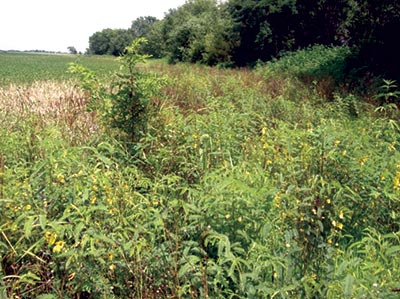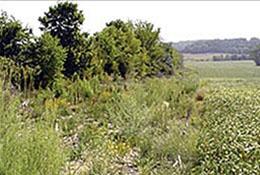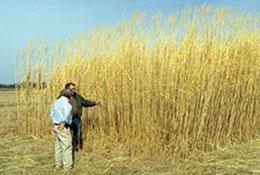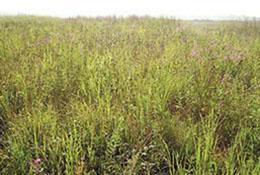 The enhancement of wildlife habitats can be integrated into your ongoing crop and forage production objectives.
The enhancement of wildlife habitats can be integrated into your ongoing crop and forage production objectives.
In fact, diverse early successional plant communities within the agricultural landscape — characterized by native warm-season grasses, shrubs, forbs and annual weeds and legumes — provide food and cover for a variety of wildlife species, including bobwhite quail, mourning doves, grassland birds and cottontail rabbits.
But this type of habitat is in short supply on many Missouri farms.
Farmers today must plan and manage habitats to achieve their wildlife conservation goals and objectives. Read more about successfully creating and managing wildlife habitats to complement your agriculture production objectives in MU publications published on this website.

Establishing and managing habitats on agricultural lands
Learn more about how a diversity of early successional plant communities within the agricultural landscape provides food and cover for a variety of wildlife species with MU Extension publication MP907, Establishing and Managing Early Successional Habitats for Wildlife on Agricultural Lands.

Field borders for agronomic, economic and wildlife benefits
Learn how field borders can provide a number of conservation benefits, such as reducing soil erosion from wind and water, protecting soil and water quality and providing wildlife habitat, with MU Extension publication G9421, Field Borders for Agronomic, Economic and Wildlife Benefits.

Integrating practices that benefit wildlife with biomass crops
Learn more about management practices that can be conducted in fields used for biomass production to benefit wildlife with MU Extension publication G9422, Integrating Practices That Benefit Wildlife With Crops Grown for Biomass in Missouri.

Mixtures of grasses and forbs for biomass, forage and wildlife habitat
Learn how native warm-season grasses, forbs and legumes can provide high-quality forage, biomass and improved wildlife habitat with MU Extension publication G9423, Establishing Mixtures of Native Warm-Season Grasses and Forbs for Potential Biomass, Forage and Wildlife Habitat.